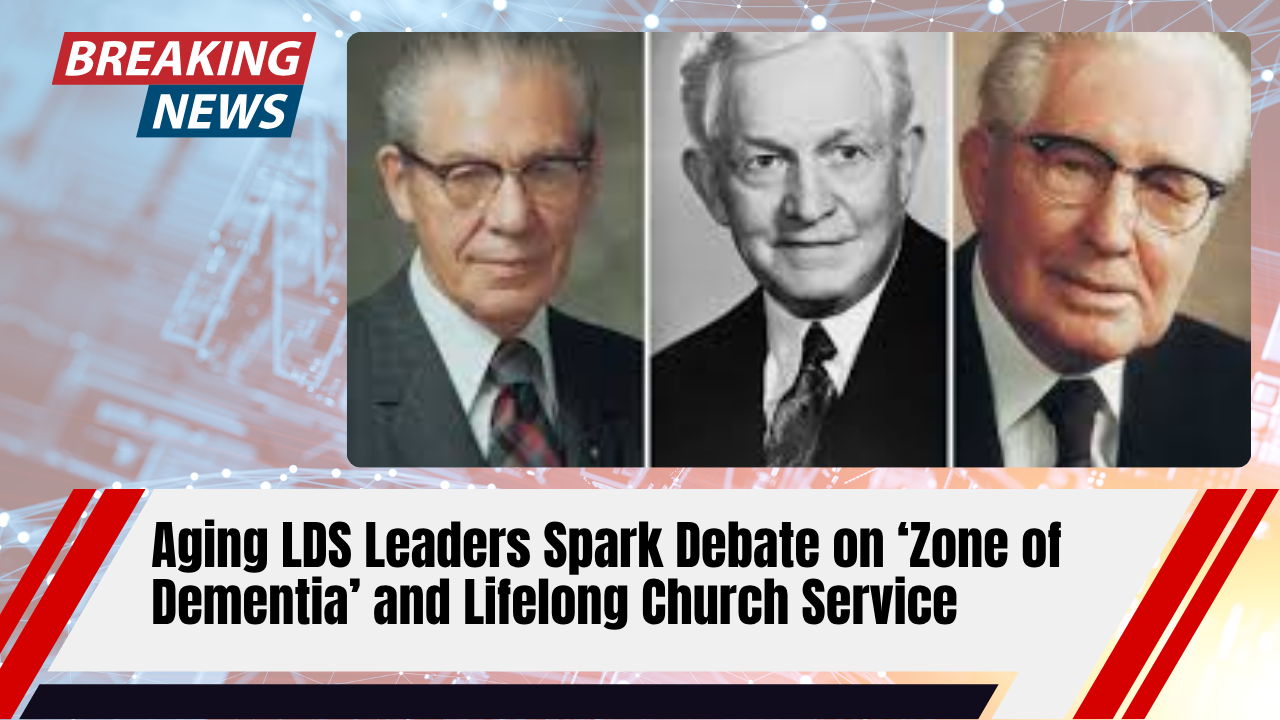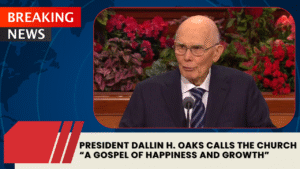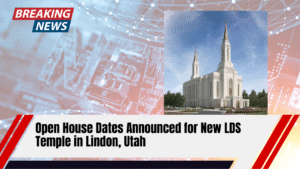SALT LAKE CITY — As senior leaders of The Church of Jesus Christ of Latter-day Saints continue to serve until death, some within and outside the faith are questioning whether age is affecting decision-making at the church’s highest levels.
The recent passing of President Russell M. Nelson, who died at 101, and the appointment of Dallin H. Oaks, age 93, as the church’s new prophet-president, have reignited discussions about the LDS Church’s service-until-death policy and how it impacts leadership vitality.
Oaks’ First Presidency includes Henry B. Eyring (92) and D. Todd Christofferson (80), making the governing body one of the oldest in the church’s modern history. For a faith with 17.5 million members worldwide, the question of how aging leadership affects organizational energy and decision-making is increasingly under the spotlight.
Historian Calls It a “Gerontocracy”
Historian Gregory Prince, who has extensively studied the church’s leadership structure, says the LDS Church’s approach to lifelong service makes it unique among major Western religions. “When leaders reach their late 80s and 90s, many enter what I call ‘the zone of dementia,’” Prince said in a recent Mormon Land podcast interview with The Salt Lake Tribune.
Prince, who co-authored an article titled “Gerontocracy and the Future of Mormonism,” explained that by age 85, the likelihood of cognitive decline rises sharply. “By that age, the odds of showing signs of dementia are roughly 50/50 — and the risk only increases,” he said.
He and co-author Lester Bush, a physician and former CIA health analyst, studied more than a century of General Conference reports to track how often top church leaders spoke publicly. Before 1960, absences were rare. But from the mid-1960s onward, aging leaders increasingly appeared but had others read their remarks — a trend first seen during President David O. McKay’s later years.
Balancing Wisdom With Decline
Prince acknowledged that older leaders bring decades of experience, but warned that it comes with limits. “By the time a man becomes church president, he’s likely spent 40 years in top leadership. That experience is invaluable — but capability diminishes with age. The question is where that balance tips,” he said.
Two modern LDS presidents — Gordon B. Hinckley and Russell M. Nelson — were notable exceptions. Both led well into their late 90s and maintained sharp mental faculties. Yet, Prince noted, several others faced long periods of diminished capacity, leading to internal challenges and leadership vacuums.
When Decline Shaped Church Decisions
Prince cited four past presidents whose health struggles contributed to what he described as “crises” within the church:
- David O. McKay, whose frailty deepened tensions over the priesthood ban for Black members.
- Spencer W. Kimball, during whose illness internal efforts dismantled the church’s historical division.
- Ezra Taft Benson, under whom the controversial 1993 disciplinary actions against intellectuals — the “September Six” — took place.
- Thomas S. Monson, who faced criticism over the 2015 policy restricting baptisms for children of LGBTQ parents, later rescinded.
“All four moments were catastrophic in their own way,” Prince said, “and might have unfolded differently under fully functioning leadership.”
Health, Longevity, and Tradition
Despite their long lives, LDS apostles don’t necessarily outlive their age peers. Prince attributed their longevity partly to lifestyle choices — such as adherence to the church’s Word of Wisdom, which discourages tobacco and alcohol — but said genetics and privilege also play roles.
He clarified that lifetime service is a matter of tradition, not doctrine. “The best answer to why it continues is simply — because that’s the way it’s always been,” he said. The system solidified after McKay’s presidency when Harold B. Lee shifted organizational power from the First Presidency toward the Quorum of the Twelve Apostles, creating what Prince described as a “constitutional monarchy” structure.
Could the System Change?
Prince believes reform is possible but would require unprecedented action. “A bold president would have to stand up and say, ‘This is the will of the Lord. I will step down, and from now on, leaders will retire at a set age,’” he said.
Some have proposed adopting an emeritus policy for apostles and presidency members at age 75 or 80 — similar to existing rules for the Quorum of the Seventy — to ensure continuity and fresh leadership.
Still, others argue that seasoned leaders bring spiritual depth and a long-term view rooted in faith. For now, the church remains steadfast in its tradition of lifetime service, even as its top leaders continue to serve well into their ninth and tenth decades.



